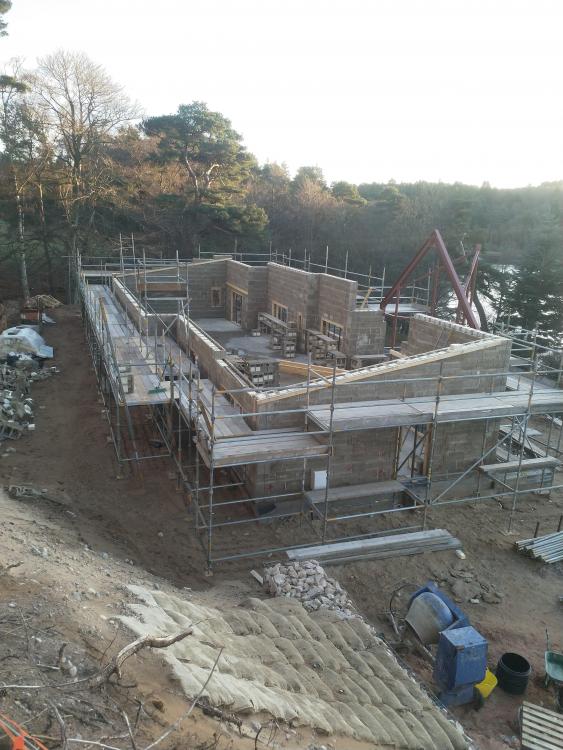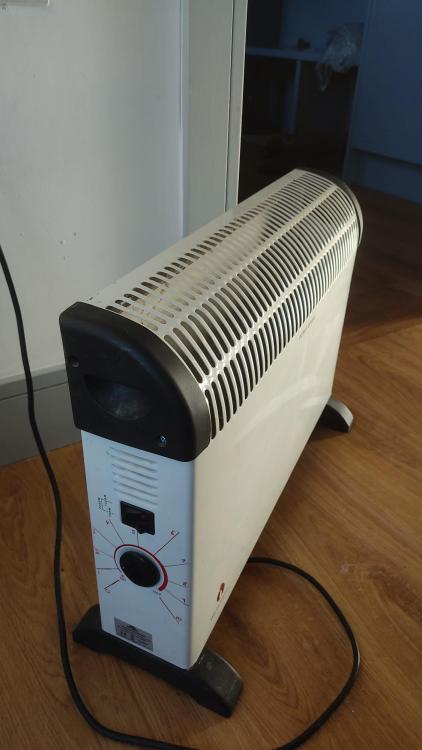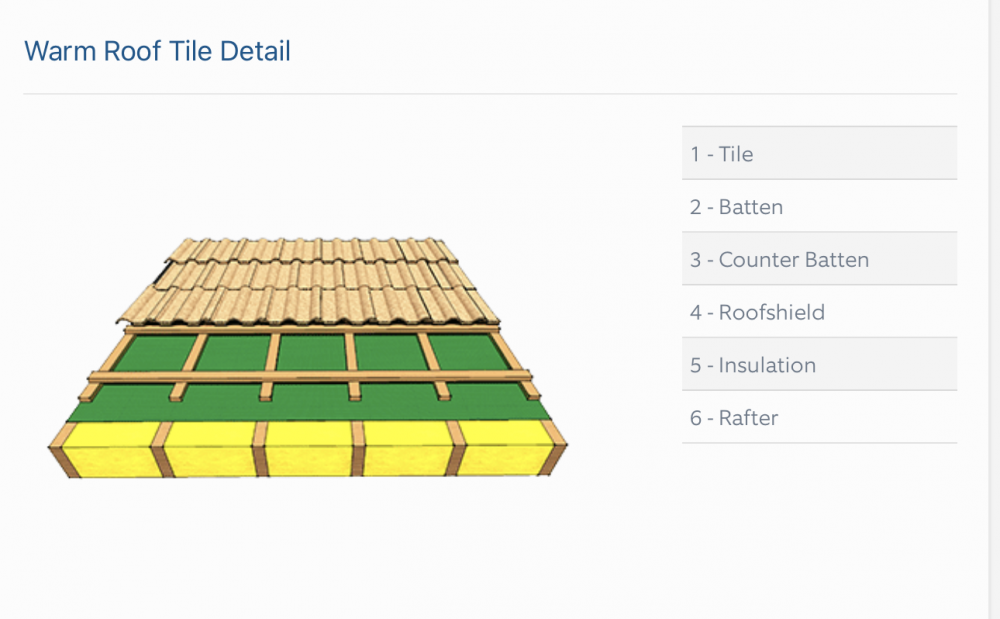Leaderboard
Popular Content
Showing content with the highest reputation on 12/05/21 in all areas
-
An objector had the suggested the motivation for our application was pecuniary gain and we were using my wife's disability to further our cause rather building the dwelling for her particular needs. I strongly objected to the council and asked them to remove the offending and discriminatory comments which they ignored until my appeal was presented. Needless to say, I used the LPA's inaction to demonstrate their unreasonable behaviour to the planning inspector in our cost application, which no doubt help paint the picture of the journey we had with the counsel. It is referenced in our costs award decision, see attached, paras 6 and 12 PPG guidance states: Paragraph: 033 Reference ID: 16-033-20140306 “Can costs be claimed for the period during the determination of the planning application? No, but all parties are expected to behave reasonably throughout the planning process. Although costs can only be awarded in relation to unnecessary or wasted expense at the appeal or other proceeding, behaviour and actions at the time of the planning application can be taken into account in the Inspector’s consideration of whether or not costs should be awarded…” Costs Decision - 3198387[100338].pdf5 points
-
Luckily we didn’t build in a village with this kind of incomer attitude but the immediate neighbours have all lived in the area for 40+ years, something they felt was relevant enough to put in their objections. It was originally a village on the outskirts of the city. We are fairly certain that the next door neighbours organised objections. They included things such as we might turn the house into a dance school and the local community council objecting to the house with a reason being it was the largest house built in the area since the 1920s. I got really wound up, and particularly wanted to have a go at the community council who also objected to my parents house whilst not objecting to a particularly ugly house built right on the main road into the area. If they are going to work in some statutory capacity they need to have some logic behind their objections but apparently not. I think they have a mate in the street. Anyway since moving in everyone has been absolutely lovely. I think they just didn’t want a house built and once it was happening they accepted it. Nonsense objections are part of the game. We just remained pleasant and civil to everyone and it seems to have worked out. If I am being very honest they are all so old I decided that in the worst case scenario I’d wait them out! They have accused you of doing something underhand so I can see your concerns. I think though if you just act like it hasn’t got to you and pretend nothing happened it’s for the best. I can’t guarantee this strategy will work but I think it’s more likely to work than lawyers letters that will get people wound up.4 points
-
Being able to switch things on and off from my phone or I-pad ? and from by the door being able to switch off the landing light from beside my bed from a switch, a real life saver, being able to pretend I am in when I am not by programming lights to similar to yesterday, auto porch light from dusk to 11:00 pm and if there is movement when it is dark3 points
-
Back in Bristol my GP retired early and I got on well with him, he also moved to Cornwall and popped in to see me during the build. When I asked him why he stopped he told me patients like me were great, willing to do what I could to help myself, but the majority were just winging moaners who wanted a miracle pill and didn’t want to help themselves and blamed him when it all went wrong.2 points
-
Just been watching a programme in which the suggest using long pendant lights in a corner and avoiding spots everywhere.2 points
-
2 points
-
I had a look at the planning application and comments. The comments are typical gossip/tittle tattle that you see on planning applications. I would just ignore them as they are irrelevant and the planners won't care. We had some preposterous things said about our application and our intentions. I can see why you are upset, but libel issues are pointless to pursue. I am surprised that this is a S73 application. I can see that it doesn't impact neighbours in any material way, but it is quite a substantial change. In particular balconies are extremely contentious from a planning perspective, even though no one actually seems to use them! I would be prepared to be asked for a new full planning application. In our case we had to withdraw and reapply both our house and my parents' house. Each time the second application garnered way more objections as it gives people time to get wound up and get organised. Either way, I don't see any actual planning issues. You aren't overlooking people etc and most complaints seem to be re traffic, access and so on. All planning applications seem to get these and they are generally not relevant. You just have to suffer through what is a very stressful process.2 points
-
If you notify the planners in writing (recorded delivery copy the legal department) and they continue to publish the libel I suspect that makes the planners liable for damages for negligence.2 points
-
Hello again, it's been a while, and thanks for all the advice I received back in 2019. I now want to update my topic with the outcome - which is that I did put in a wet UFH loop - and that I'm very glad I did. Initially I decided to hedge my bets and lay in a PEX loop as well as some ducting for air-to-air during the construction of the extension. Neither were costly and meant we could decide on the heating solution once we had gained experience using the room. This didn't happen until summer 2020 during which we occasionally had outdoor temperatures in the high 20's peaking at 32. The garden room mostly behaved very well with only the period between mid-morning and mid-day seeing too much solar gain from the S.E. elevation. Jeremy Harris was right to point this out as being potentially the more significant issue. However, by opening both sliding doors a little way to get a crossflow (on the N.W.- S.E. axis b-b on the plan) the room could be kept comfortable. If the house wasn't occupied we would simply close the doors to the rest of the house. So far, so good. Winter 2020-2021 wasn't particularly cold so we employed a 1200W halogen portable heater and continued using the room whenever we wanted to. This was very encouraging and by October this year, having had another comfortable summer, I decided just to hook-up the UFH and leave the air-con ducting buried in the wall. Now we've had a few sub-zero periods since then it seems that we have a good solution. On a sunny but cold day the room is benefiting from a solar boost in the morning so generally it comes on overnight and goes off after between 4 and 12 hours depending on weather. The only issue I have had is that my boiler only modulates down to 10kW so if the UFH is the only load it would short-cycle too much. Rather than install a buffer tank I simply modified my control algorithm to modulate the zone valve serving the central heating radiators which now get a tiny pre-heat in the early-hours. My zone valves are custom servo-actuated home-brews operated by a Raspberry Pi which means I'm also logging all the temperatures and energy usage to keep on top of things.2 points
-
Hold fire!! Hold Fire goddammit !!!!!!! ASHP, PV, sunamps , UFH, MVHR if installed in the wrong manner or circumstance will be little more than fancy words that burn up all your cash. They work very well for lots of Buildhubbers but invariably as an addition to houses that really have sorted the fabric first. Their houses are comfortable and cheap to run with these cool technologies not because of them. We have a passive class house. Almost zero money was spent on fancy tech (except €3k on MVHR). No ASHP, UFH, sunamp, thermal stores, solar thermal, solar PV no central heating, and no logburner. The house is very comfortable, no drafts, temperature topped out at 22deg in a heatwave, bottomed out at 18deg before we turned on the heater. Normally its 19-21 in every room with little input. We heat our water with an immersion and an UVC. 2 adults + 2 small kids at home all summer. Average total electricity consumption 18kWh/day or 0.1kWh/m2/day. Space heating is done by one of these, sitting in the hall. I'd like to claim it was cheap but I it found buried in my parents shed. My hitech upgrade was taking a red marker and adding some divisions to the thermostatic dial. I'm now monitoring the electricity usage (simply by reading the meter and putting it into a spreadsheet) to decide if an A2A heatpump is justifiable. Data is still all over the place as we've only been heating with a week or two. My point being is that your hard earned cash is precious and sales people will tell you the sun moon and stars to make you part with it. The biggest bang for your buck is fabric improvements (its boring i know!) and the more you do here, the less and less fancy addons make sense. Firstly move into your house .Keep your money in your pocket! Live with it and monitor the parameters. We got one of these from Lidl. ( You're getting a taste for how tight I am at this stage!) Then get going on improving the house in this order. 1.Eliminate bulk water ingress. 2.Ventilation, preferably mechanical, ideally MVHR. 3.Airtightness, so cheap to DIY and so effective. 4.Improving U values including windows + doors. 5.Reduce consumption via low input devices ( heat pumps etc) 6.Renewables. Best of luck!2 points
-
Or in somebody else's? Trying to give sparky ideas that might depart a bit from the same old same old. Airtightness is one consideration (2 storey new build with cold attic), but also How lighting can make life better New tricks with new toys welcome if not huge cost difference from same old same old.1 point
-
You can’t plaster first Apart from the new plaster getting ruined while they are laying the concrete The plaster will suck all the moister out of the floor causing the skin to blow If you use a wet backing plaster (S&C) You will have to put a skirting on to cover the expansion gap1 point
-
Ask him if he wants to move to North Devon, I will volunteer to be his patient ?1 point
-
That's a shame. It sounds as though everyone has lost out really. I can't see that he has been through the MPTS at all. The CCG applied to stop him from being one of their GPs rather than going through the fitness to practice route, so he should be still able to practice outside of West Kent CCG area.1 point
-
I miss him tbh. Both SWMBO and I have a lot of time for him. I wrote a letter of support etc but to no avail. Think he had the last laugh as the surgery has seriously gone downhill since he left.1 point
-
A lot of the better fab shops separate their mild steel production areas from the ali and stainless using a completely different tool set. This to prevent cross contamination. Basically you get bits of mild steel swarf embedded in a grinding disc then use it on ali or st/st where it rusts. Years back we found if we cut M16 304 studs with a 9" cutting disc the end would rust. The thought that it was overheating. The trick was to then "gently" dress the end with a 4 1/2" grinding disc to get rid of the damaged/overheated area. Times have moved on and we now use thinner slitting discs so might not be so much if an issue.1 point
-
That is stainless steel cleaned up with something that has been used on carbon steel, a grinder for example. The normal engineering way to get this off is with an acid gel. Not something you can safely do at home. The stainless is not rusting. The carbon steel deposited is corroding. A local engineering shop may be able to treat it for you.1 point
-
I see something similar every so often. Its not the stainless steel rusting. Its cross contamination from using the same grinding wheel to what was used on a piece of mild steel. Considering the rust is localised to the welded corner, I would assume its this. As for-mentioned a scotchbrite and some stainless cleaner will do the trick. Ironically stainless steel does actually stain, you may be left with a "tea bag" stain.1 point
-
In our case I just made sure I never did anything wrong, that way, any allegations can be proved wrong (with a smile on your face). Their loss not yours.1 point
-
I tend to use U-Pol etch primer for most things now. However you might consider Hammerite Special Metals Primer. Looks like a thin red oxide. I've used it on aluminium, copper, galvanised steel and stainless and it's pretty good...despite it being made by Hammerite! ?1 point
-
the grille at the back I'm pretty sure is only chromed, mine went a bit brown but when rubbed off it settled down. The corner, it might be worth giving it a rub with scotchbrite just in case the wrong wheel was used when buffing it?1 point
-
once we've built our house I'll let you know what we love about the lighting! but, we did employ a lighting designer to design an overall concept for the house and we love what she did. now it's down to us to put it in place.1 point
-
The only LED failures I have had was several Philips LED Bayonet lights bulbs. considering they were a make I used to respect and were not cheap, very disappointing. I do NOT like the current trend to downlighters having non replacable lamps, and glad all of ours are GU10 fire rated fittings with LED lamps.1 point
-
Warm LED's only. We have a super bright 1450lm spotlight over the prep area in the kitchen which is excellent for cooking. However it's very cold at 4000k. I plan to swap it for a 3000k unit. Maybe even brighter at 2000lm. Other than that it's single room pendants and a light switch by the door. Life is complicated enough without our lights going all Skynet and becoming self aware.1 point
-
I just love the low energy of an all LED lit house. LEss than 150W with every single light in the house on. I can remember when just a kitchen easily used twice that amount. Nothing fancy here, downlights in hall, utility kitchen and bathrooms, fancy light fittings in living room and dining room, and standard pendants and shades in bedrooms. Warm roof here so ceiling penetrations for downlights not an issue (I might have mentioned a warm roof was one of or best design choices) and with the advent of LED's my aversion to downlights has gone.1 point
-
I tackled this last week. A lot of time with a pipe cutters chopping out all the old mlcp and replacing it with new Hep2o. I have a bucket of brass crimp fittings and two bin bags full of 9 month old pipes to show for my troubles. I asked the plumbers initially to plumb the house, direct UVC and DHW only as we have no wet CH. I wanted a manifold radial system with no pipe joints unless absolutely unavoidable and then to have them in accessible places like under sinks or in the hot press (Airing cupboard for the non hiberno-anglophonics amoungst you.) The result was less than satisfactory, initially with an unsafe UVC installation, followed with a less unsafe UVC installation after rectification (still not right however) and a very slow delivery of hot water to the downstairs kitchen tap and WC. Other mistakes happened including installing the bathtub, 2 shower trays + a toilet, loosing lots of expensive parts (toilet hinges at €75 a set), leaving half the taps rigged up backwards and dripping at joints and burying MCLP brass fittings in lots of inaccessible locations. Then charging €6k+VAT (via the builder) It's taken me the best part of a year to calm down! Anyhou here is the end result of the UVC layout Before and After. I've tried to follow my diagram I drew up in an earlier post. The "After" photo was taken before I was quite finished so ( no insulation, 2 pipes left to run), but please comment on any mistakes you can see. The other part I tackled was running balanced cold and a new hot water pipe to the kitchen tap. Previously it took 3.5 to 4 litres of cold flow ( about 35 seconds ) to get hot water at the kitchen tap. That was with the TMV already heated up from using another tap. The plumbers put 26mm MLCP to a manifold, buried behind some built in units and then ran 16mm to the tap. I put the TMV directly onto the tank with the manifold (as per @Nickfromwales the top tip ) on top as the second photo shows. I then poked a hole in the ceiling of our utility and ran the pipes behind the utility cupboards and under the kitchen units to the tap. Total distance 12.8m. (I marked the pipe to check). The end result was a wait time of 9 seconds from totally cold to totally hot at the kitchen tap. I was chuffed! Interestingly a good chunk of the water volume needed to pass through seems to be in the tap itself. Flow rate is between 5.2l/min compared to the cold in 15mm Hep2o at 8l/min. It is more than adequate. If you want, you can still have 10l/min. Just blend it from hot to very warm at the sink using the tap mixer. The cold has the same distance to run but not through the TMV which I gather looses a lot of pressure. I think the tap itself and flexi tails account for much of the restriction to flow, even over a long distance. I'm very pleased with the result. There were some lessons learnt along the way. 1. Hep20 is a excellent system. So long as you don't scratch the pipe it's idiot proof. My preschooler was able to make a connection. (Only 10mm thought, lol!) The fittings+stainless steel liners have a generous inner diameter compared to the MCLP brass fittings. Hep2o 10mm@5.95mm, 15mm@10.25mm 22mm@16.90mm compared to the MCLP 16mm@7.2mm 26mm@15.1mm and 32mm@19.4mm. (Plastic MCLP is even smaller) The only exception was these. I would only use if really necessary. 2. I tried to seal brass threaded fittings using only PTFE tape and had 6 very disappointing leaks. I dismantled it all again and discovered something called hemp and Boss White via the builders merchants. A little tricky at first and required roughening the brass thread to get the hemp to stick ( peel it like a apple with a hacksaw blade he said!). However I had a 100% hit rate on all my brass to brass connections there after. 3. I had a leak from the expansion vessel where the 3/4" pipe tail cut through he rubber washer on the 3/4" tap connector I used. Lesson learnt. To be replaced by a Hep2o to 3/4" brass connector. Thanks to all the help on this thread especially @Nickfromwales and @PeterW. Now just to repair the ceiling!1 point
-
PIR sensor switch for downstairs loo. No more grotty pullcord!1 point
-
We decided against any automation and let sparky guide us, he used mostly angled LED downlighters and 5A lamp sockets to great effect, we have a few feature up lighter & pendants also. LED strips used tactically where downlight not feasible e.g. on bulkheads in room in roof, bathrooms and under bannisters (this worked quite well). I made a 9 lamp pendent for our atrium using bits and bobs from Dowsing & Reynolds plus over 50m of braided cable (was definitely a measure twice cut once job). Nearly killed me installing it but looks great. PIRs and LUX sensors can also provide a degree of automation for bathrooms, evening lights etc.1 point
-
As above Some SE engineers seem to think that piled foundations are the answer to everything Others use them as a last resort Foundations for Something like you are proposing should be very inexpensive1 point
-
My GSE trays are mounted direct to sarking boards. You may loose 2 to 5% performance of the hottest day, very little or none at other times. Our sarking boards are normal Scottish ones 22mm thick, approx 150mm wide. Trouble is, if the put the battons as per instructions, but on top of the sarking boards, the slates don't install very well.1 point
-
Speak to different structural engineer? Or challenge the one you have. Ours wanted all sorts of steel in our walls, until I challenged him and then he dropped the requirements considerably and to far more what you would expect. Trouble is they take the easy, low risk for themselves approach, because it's easy and requires not thinking out of the box.1 point
-
A caravan as a dwelling WILL still need planning permission. It is building regs that it avoids. So I would say you would be okay just placing a few pads to spread the load, the more the better.1 point
-
I beg to differ. One of my more interesting clients, when I ran an ISP, decided that he was bored with us and moved to Demon (many many years ago), and took them for £100k as I recall. I think the key issue is editorial control. If the council (or whoever) decides that something is OK and *chooses* to publish it, then they may be liable. Rgds Damon1 point
-
1 point
-
@Visti Initially we used a 24 Hour Supply Master Fused Spur Time Switch to dictate to the Sunamp when it could/could not charge. It was set to come on at 11:30 and stayed on for 4 hours. During the summer months it would be charged up within 3 or so hours, using the sun if it happened to be shining and grid if it wasn't. I then swapped that out for a Shelly 1PM, as recommended by @PeterW. I was going to use its 'IFTTT' ability as I was on Octopus Agile but that didn't really work as the Agile price has been through the roof, 24/7, for the last month or more. I am now on Octopus Go which has a 5p/kWh price from 00:30 - 04:30 so the Shelly turns the Sunamp on between those hours (again, it's normally finished in about 3 hrs). Shelly's also give our Willis heaters (for the ground floor UFH) the same 4hr window of opportunity if the need is the there, same goes for the towel rails and electric UFH in the bathroom/en-suite. If the sun is shining I'll use the Shelly 'app' to turn stuff on as and when.1 point
-
That all sounds like a nightmare so much so it would put me off moving there. Our plot has one immediate neighbour. They aren’t happy about another house being built which I understand completely. Plus the farmer selling the land upset her when the borehole was being drilled as it covered her house in red sand. I’ve done a good job in winning her round hopefully but I can see we’ll need to walk a fine line. We do want to get on with her though so intend being as accommodating as is practicable.1 point
-
1 point
-
Hi Russdl, Any chance you can let us know how you sorted that out? At the moment our sunamps charge whenever they like and aren't connected to our PV. We would ideally like to do what you have done so we could make better use of our tariffs. Any help/guidance on your system setup would be very much appreciated, Laura and Oliver1 point
-
we used Proctor Roofshield (https://www.proctorgroup.com/products/roofshield) as our roofing membrane. This is allowing us to fully fill our 197mm rafters (actually putting in 190mm due to availability of thicknesses) of Isover Frametherm 32 glass mineral wool batts with 90mm PIR below the rafters. you could try this route. speak to your preferred insulation manufacturer and ask them to do a condensation risk analysis on your chosen make up and they'll do the calculations for you.1 point
-
1 point
-
That's twin wall ducting with a smoother (usually white) inner layer? As long as the inner layer is not damaged it will be fine. I would just give the damaged outer layer a wrap of air tightness tape just for good measure.1 point
-
With the ducting being fully lined I wouldn't expect it to be an issue, assuming the damage hasn't gone all the way through. If it were me I'd wrap it in duct tape just to be sure. Actually, I'd probably wrap it with aluminium tape first then duct tape as I like to over-engineer things..1 point
-
There are several grades of stainless. Even our food grade 316 can corrode if we use the wrong cleaner on it. https://continentalsteel.com/stainless-steel/grades/ As for painting, no idea. https://theartsuppliers.com/painting/painting-on-stainless-steel-everything-you-need-to-know/ And some stainless can corrode and fail very quickly in the absence of air.1 point
-
@Omnibuswoman sorry to hear you are going through this, sounds awful. If it really is libellous, you should sue both the council and the neighbour in question. Libel is quite a technical area, so worth running it by a specialist. Carter Ruck is a law firm that is well known in this area. They might give you an initial consultation over the phone for free.1 point
-
Well done you mate - that cost award was particularly ouchy for the LA. Rare that you get costs from these twats.1 point
-
1 point
-
Yeah loads . Abuse , lies . Criminal damage etc . Welcome to the world of fu*kwit neighbours when you submit planning applications. Don’t worry about it - (expletive deleted) ‘em I find telling them to get (expletive deleted)ed to their face a good way to deal with it ( I feel better anyway )1 point
-
Yes our neighbours were furious that I named them (but the council did nothing ?)1 point
-
Why not go for 150mm cavity (like I did) and save heating costs forever. (And I would not use rigid insulation in the cavity, I used batts which you can self instal).1 point
-
Welcome, I think the above is very good advise, at least starting now the weather will get better as the build progresses. I went with brick and block and wet plastering and warm roof ?keep us informed of progress and don’t forget there is no such thing as a daft question (we have all been there).1 point

















